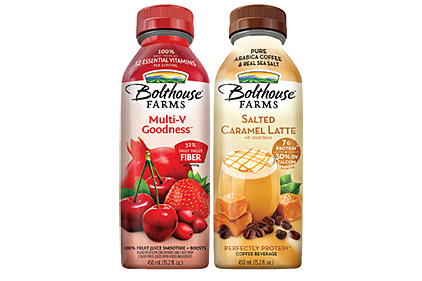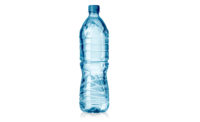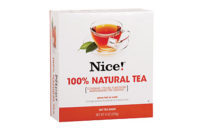A trip to the drug store is no longer just an opportunity to refill a prescription or restock the family first aid kit. Today’s retailers are instituting different programs to provide shoppers with a more value-added experience, experts note.

|
“Drug channel marketers have employed a number of programs to entice consumers — expanding assortment of food and beverage, enhancing private label, stepp[ing] up effort on overall wellness, and [offering] more customized shopping experiences,” says Susan Viamari, editor of Chicago-based Information Resources Inc.’s (IRI) Times & Trends.
The channel’s sales, however, have remained relatively stable, with consumer packaged goods dollar sales up 1.8 percent and unit sales relatively flat, she says.
Referencing similar data, Ali Lipson, senior retail and apparel analyst for Mintel, Chicago, says drug store sales reached $235 billion in 2013 and are expected to increase more than 2 percent to reach $240 billion in 2014.
Lipson notes that a number of factors are contri-buting to the drug store market’s performance, such as an aging population, changes in health care, mobile and online shopping, and the expansion of retail clinics, but the channel still has remained stable.
Beverages, however, have provided the channel with single-digit growth. Dollar sales were up 4.3 percent in 2013, while unit sales increased 4.1 percent, IRI’s Viamari says. This is outpacing the beverage industry average increase of 1.5 percent for dollars and 0.1 percent for volume across IRI’s multi-outlet plus convenience store geography, she adds.
Mintel’s Lipson notes that while health and beauty represent the largest share of drug store sales, food and beverage is second. For 2013, food and beverage sales were up 2.8 percent, thus increasing the market share to 26.7 percent versus 26.4 percent the previous year, she explains.
“A lot of drug stores are expanding their food and drink offerings, so that certainly should increase how [many] people are buying beverages there,” Lipson says.
In addition to increased assortment, IRI’s Viamari explains that the top-performing beverage categories in drug stores, including coffee, juices and juice drinks, also are being supported by increased promotional activity as well as positive performance of the category across all channels. In drug stores, the coffee category increased approximately 14 percent for the 52 weeks ending Dec. 29, 2013, according to IRI data. Refrigerated juices and juice drinks were up more than 10 percent in drug stores during that same time period, it reports.
Jon Hauptman, partner with Willard Bishop, Barrington, Ill., anticipates that drug store chains will continue to differentiate themselves through a number of tactics including localized assortment and tailoring their stores to their respective communities.
“In the beverage category, this means that chain drug stores should be more open than ever to suppliers helping them isolate the ‘right’ assortment for the ‘right’ stores, and the ‘right’ promotions for the ‘right’ shoppers,” he says. “Specialty beverages should play a very large role in the new chain drug store environment.”
In addition to customized product assortments, retailers are reaching consumers through programs and experiences, experts note.
One way retailers are doing so is by leveraging their loyalty card programs, Mintel’s Lipson says.
She notes that CVS offers its My Weekly Ad program, while Walgreens has made redeeming rewards easier by having employees prompt consumers about whether they want to use their rewards at checkout.
“It’s basically saying, ‘Oh, here, you have this available; we’ll help you get a better deal,’ so I think that’s one way they’re helping [stores] retain shoppers and make people feel good about shopping there,” Lipson says.
IRI’s Viamari notes that value is important to consumers. “It’s important to continue to focus on the value message,” she says. “One-quarter of consumers are having difficulty affording regular groceries. Consumers [are] looking to save money wherever possible.”
But in order to attract consumers from other channels, Mintel’s Lipson says that drug stores will need to focus on three things: service, convenience and evolution.
Relating to evolution, some Walgreens flagship stores already feature coffee bars, frozen yogurt machines and sushi bars, but the company also recently launched a new store in Chicago that features a Zen Balanced Living area.
“Basically, it’s an area of the store that focuses on different health and wellness offerings,” Lipson says. These offerings include an on-site dietician and chair massages to offer a spa-like atmosphere, she adds.
“If a dietician is on staff and people are wanting to make healthier choices, they can ask how they can swap out different beverages,” she says. “Maybe there’s something they’re consuming that’s higher calorie, and they’re looking for a lower-calorie option.”
This concept also fits into an increased focus on service model. In addition to the increase of health clinics within drug stores, retailers also could provide acupuncture, manicure services and in-store fitness classes, Lipson says. This also could offer an opportunity to merchandise beverages, like a post-workout recovery sport drink, she adds.
For convenience, Lipson suggests that drug stores could institute saved shopping lists online as well as merchandise popular items for cold and flu prevention — over-the-counter medicine as well as foods and beverages — in one readily available area.
Understanding the drug store consumer
When it comes to shopper demographics, drug stores are more diverse than some might think. “Drug store consumers really span all ages, genders, races [and] ethnicities, but there are definitely notable differences in the items they’re purchasing,” says Ali Lipson, senior retail and apparel analyst for Chicago-based Mintel.
For instance, older adults are more likely to buy over-the-counter medicines and prescription medicines during their shopping trips. Younger consumers, however, are more likely to purchase photo prints and photo print products, as well as food and drinks for both immediate and later consumption, Lipson explains.
However, drug stores should not get caught up on one demographic versus the other, she cautions. “It’s important to note that rather than focusing on one particular type of shopper — because there are so many demographics shopping at drug stores — it’s more about focusing on what their needs are and what types of categories they’re really shopping,” Lipson explains.
When it comes to younger consumers and their food and drink purchases, Lipson says they are looking for immediate consumption. According to a Mintel survey, 31 percent of drug store consumers indicate that they purchase food and drinks at drug stores for instant gratification, Lipson adds.
“Younger adults … they’re more likely than other age groups to buy for immediate consumption, so … indicating convenience [will likely target] those who are 18-24 and 25-34,” she says.
But later consumption still has its place for consumers. “According to our survey, 38 percent of drug store shoppers purchase food and drinks to consume at a later time,” she says. “They’re buying stuff that they’re going to [consume] at a later time, … maybe a larger container of orange juice or milk that they’re not going to take and start drinking on-the-go.”
Mintel’s data also found that 25 percent of consumers enjoy shopping at convenience stores, Lipson explains.
“Because there’s an added convenience, people are in the drug stores, they’re buying other items, they like to be able to pick up other things while they’re there,” she says.






